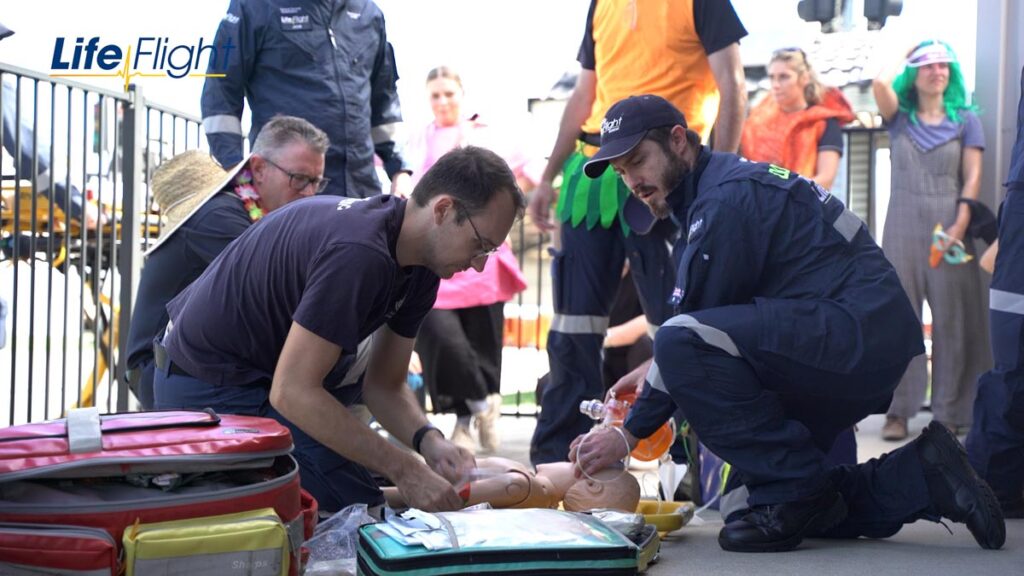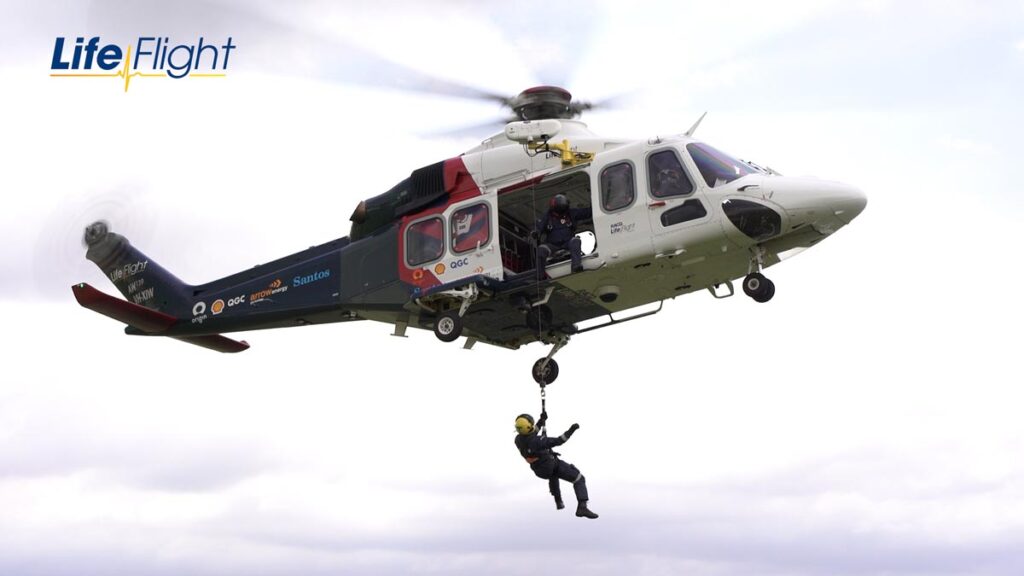
Doctor Daniel Ballantine is the newest addition to join RACQ LifeFlight Rescue, at the Bundaberg helicopter base where he will help residents in the Wide Bay-Burnett region and beyond.
The new recruit went on his first mission to the North Burnett region earlier this month, to airlift a toddler who had been bitten on the foot by a snake.
No stranger to regional medicine, Dr Ballantine said he has a keen interest in Rural Generalist Medicine and anaesthetics.
The highly experienced doctor recently underwent a week of rigorous training at the LifeFlight Training Academy to prepare him for aeromedical retrieval work aboard a helicopter.
“I think the goal of retrieval medicine is to provide a specialist service to some of these more regional areas and I just absolutely wanted to be a part of that, so here I am,” he said.
“I’m very excited for winching. I kind of have this weird fear of heights but I feel like I could conquer it, if I’m dangling outside of an aircraft, so I’m ready to go.”
Dr Ballantine is one of 26 doctors to recently join LifeFlight.
But first a week of intensive aeromedical training at the LifeFlight Training Academy had to be completed, including Helicopter Underwater Escape Training (HUET) and rescue winching.

LifeFlight HUET Manager Mick Dowling said in the unlikely event a helicopter crashed into water, it was vital the new doctors had the skills required to escape to safety.
“If the occupants have been trained in HUET, they have life skills and an instinctive skillset that they can put into play to get themselves out,” he said.
“In most cases occupants will survive the impact initially.
“It’s when the aircraft is underwater, they’re getting disoriented with the water, and it’s all about giving the skills to exit the aircraft using references, so the whole time they know exactly where they are in that machine.”
LifeFlight Chief Aircrew Officer Matt O’Rourke said the intensive training exercises gave doctors specialist life-saving skills needed to reach patients who may be inaccessible by road or foot.
“We take them through a range of different winch scenarios; single winch, double winch, stretcher winch, of which they may utilise once in the field,” he said.
“The scenarios are very much tailored to the base they would be at.
“So that can be over land, they may be winching 100 feet to a motorbike accident, it could be 250 feet into a ravine, to ocean tasks which may be to a large container vessel, a passenger cruise ship where we have a critical patient, or an injured patient and they need to retrieve them back into the aircraft.”
The Bundaberg-based RACQ LifeFlight Rescue crew was tasked with a record 410 missions during the last 12 months – a 52 per cent increase on the previous year.
In the space of just a few days crews attended four offshore rescues in 2023 making it a memorable year for Queensland’s leading aeromedical organisation.
They helped 262 people across a range of needs, including motor vehicle accidents, a dingo attack on K’gari, jellyfish stings and a tractor roll-over – all in the organisation’s 25th year of service to the Wide Bay-Burnett Region.
The majority of RACQ LifeFlight Rescue Critical Care Doctors’ work is performed on behalf of Queensland Health, tasked by Retrieval Services Queensland, within Queensland Ambulance Service.
- Other news: Uncorking the science of fermentation




